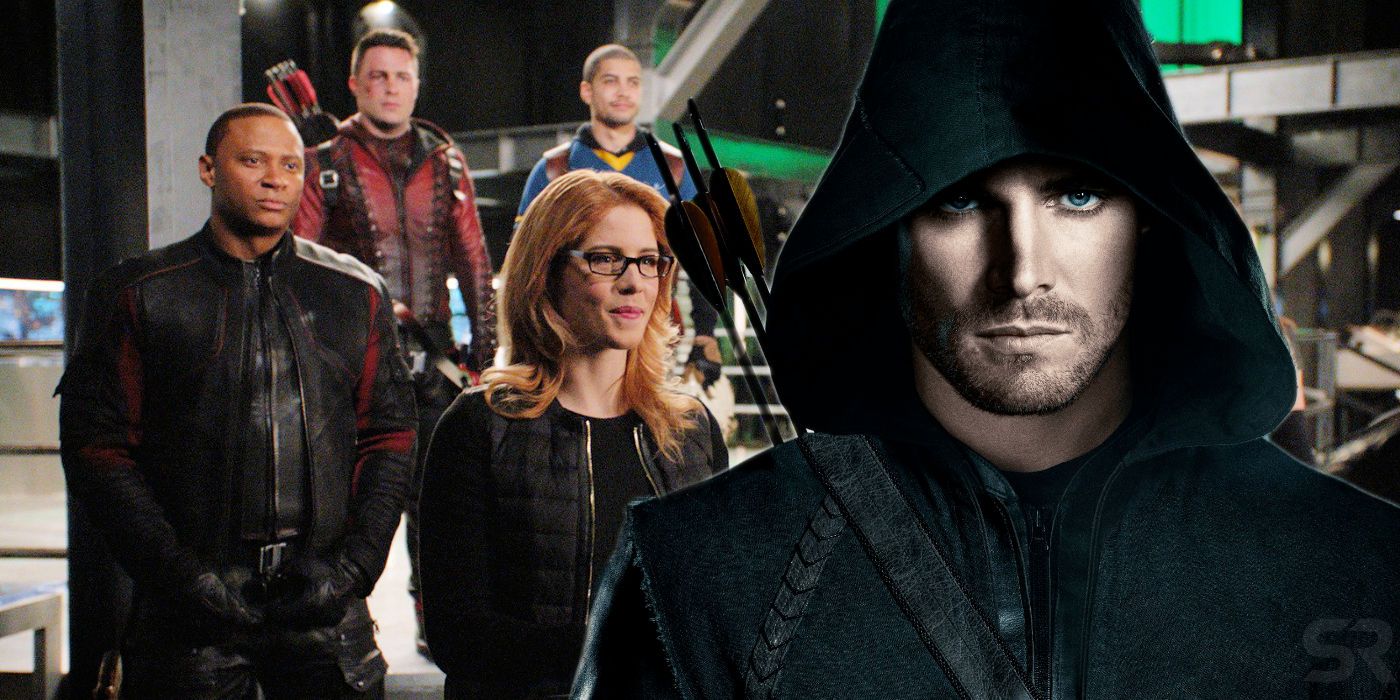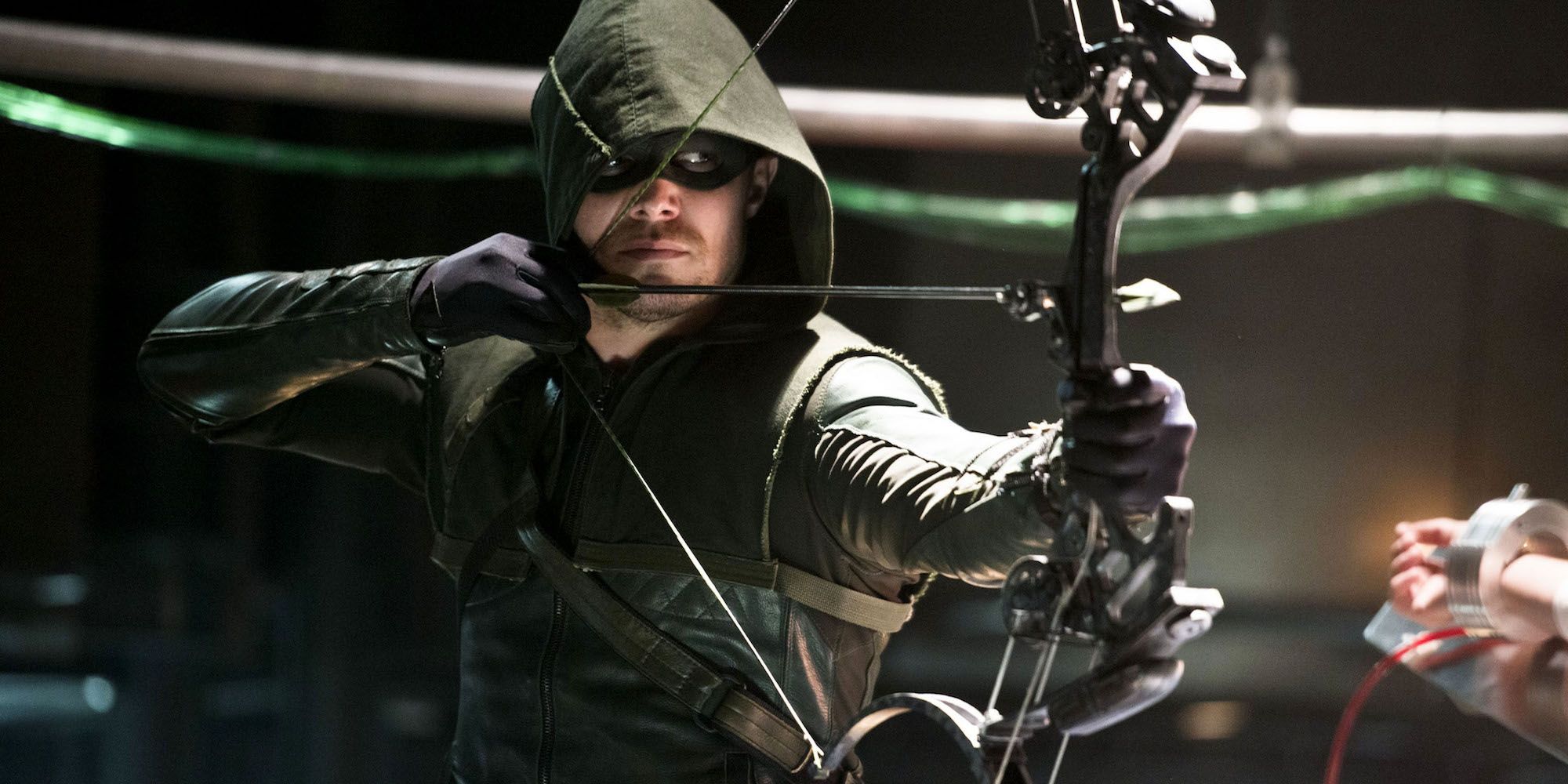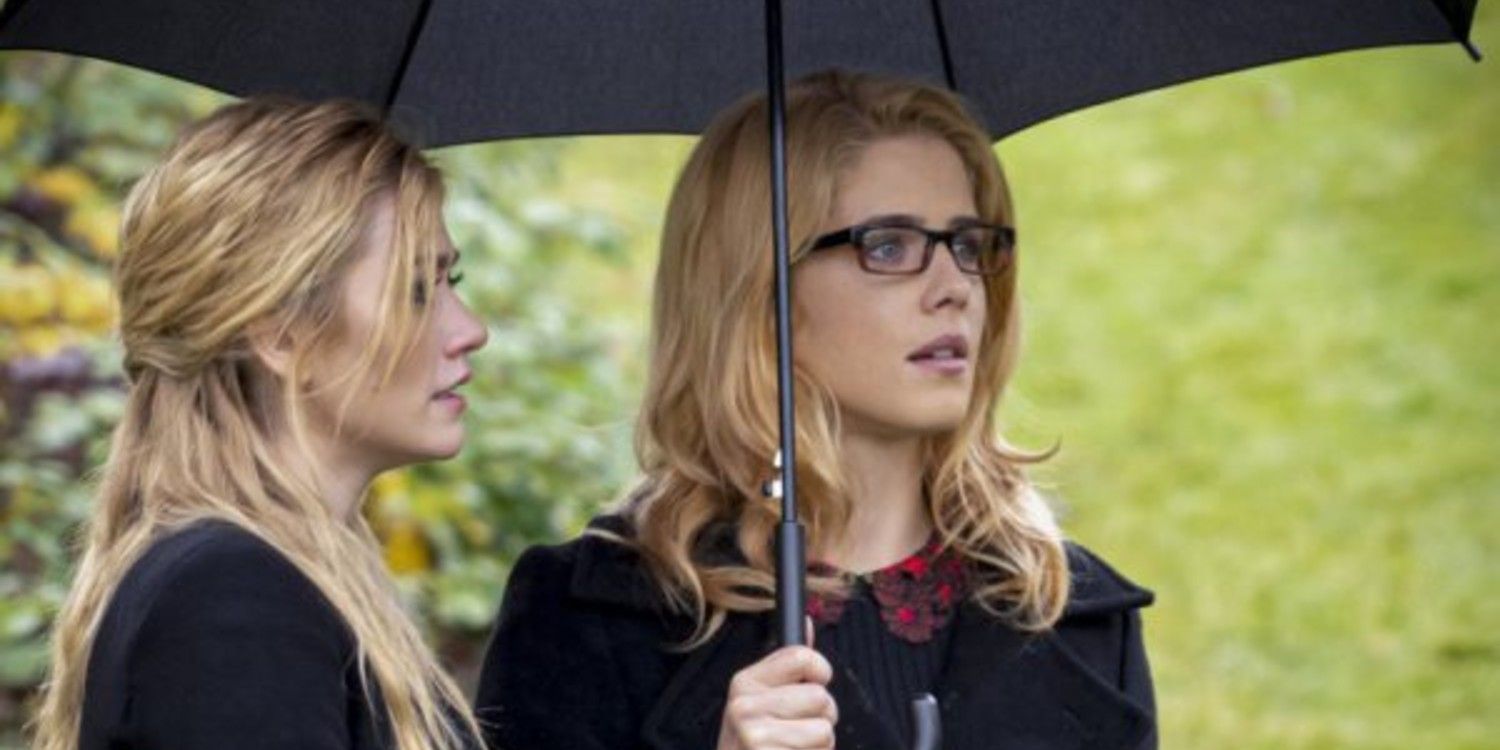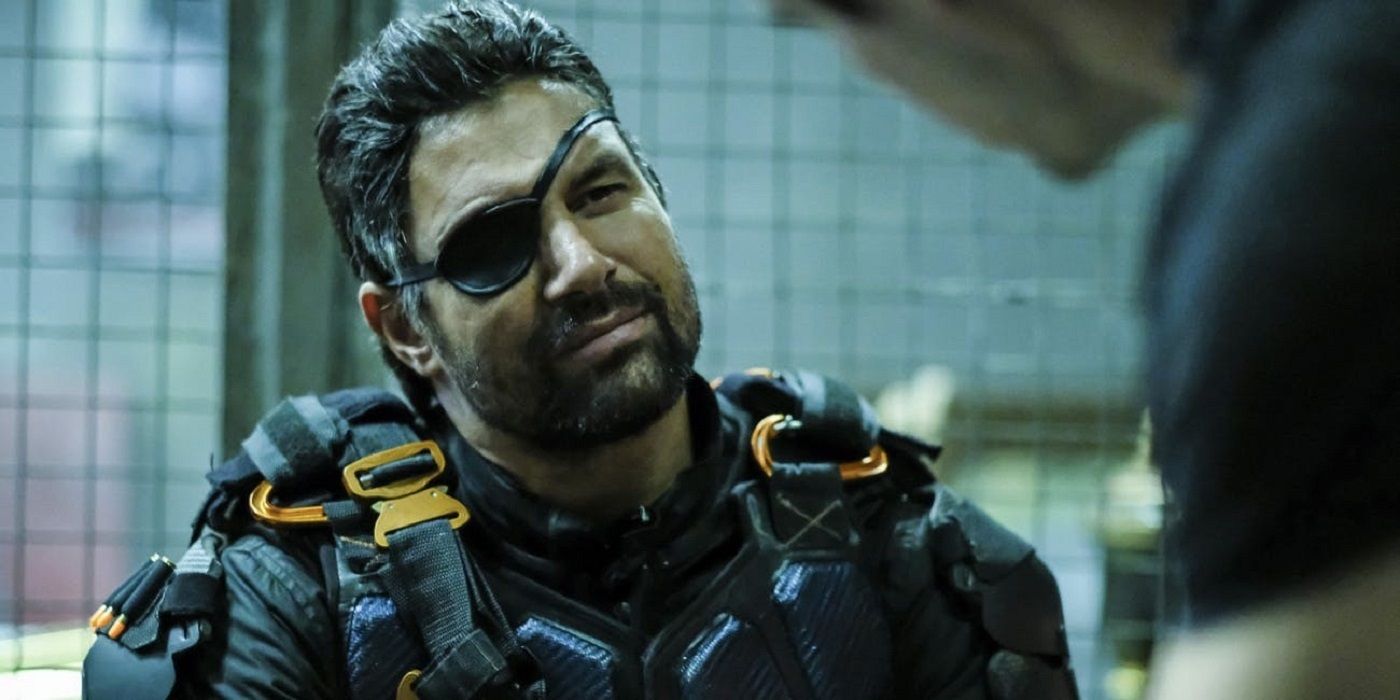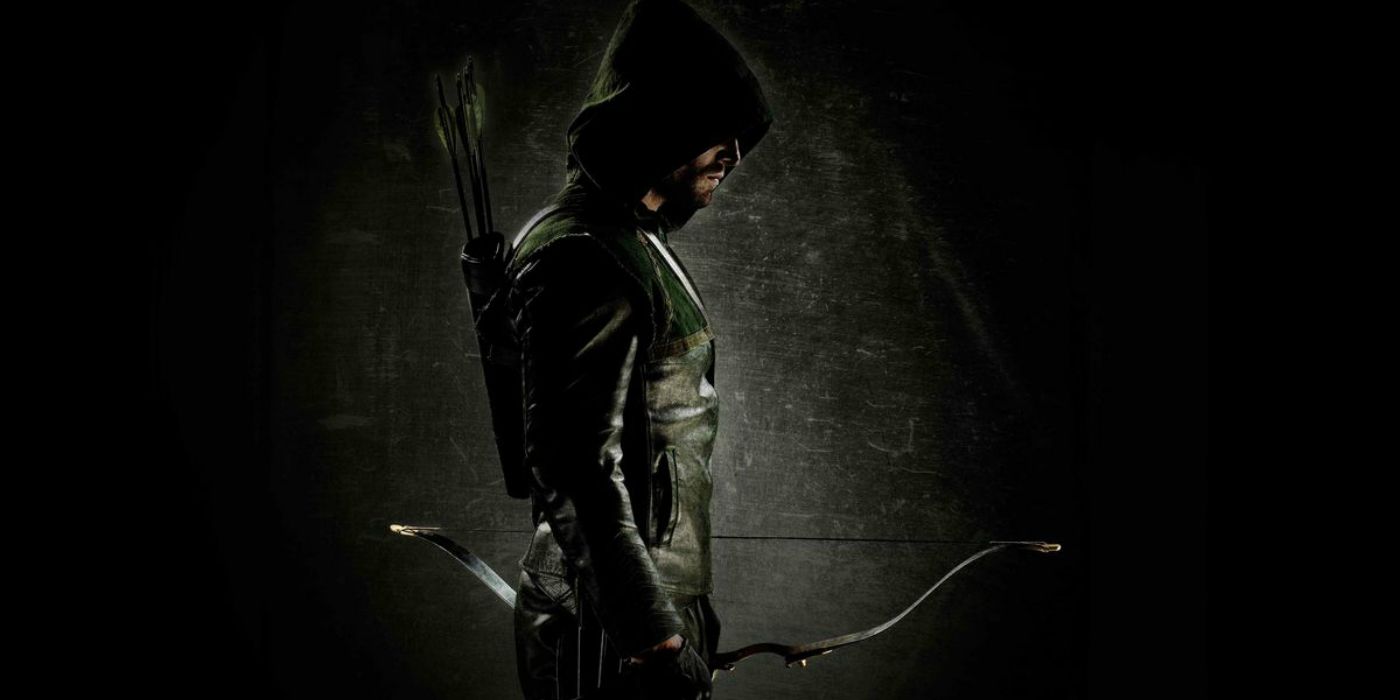The original plans for Arrow were very different to what the show ended up with, but thankfully all that changed for the better. DC TV first began considering the idea of an Arrow TV series all the way back in 2006, but their plans fell through for what would have been a Smallville spinoff.
It wasn't until January 2012 - after the end of Smallville - that The CW felt ready to announce the show. They hired Andrew Kreisnberg, Greg Berlanti, and Marc Guggenheim to work on the series, and they soon decided Arrow shouldn't be a Smallville spinoff. Although they were involved by Smallville's success - sharing the initial reluctance to show superpowers - they nevertheless imagined Arrow as something brand new.
Berlanti and Guggnheim had recently worked together on the ABC dramedy Eli Stone, and they'd learned a difficult lesson. "Eli was always on the verge of being canceled," Guggenheim explained in an interview with EW, "so we never said, 'Oh, we'll do that in season X,' because we never knew if we'd get season X. So, we were like, 'We're going to do it right now.'" As a result, the showrunners committed to their show, and they "burned through story with abandon." If something worked, they pivoted to focus on it; if an Easter egg sparked creative ideas, they adapted to incorporate them. That meant massive changes for Arrow.
Arrow Was Supposed To Focus On Oliver, Laurel & Tommy
Arrow was always going to be centered upon Oliver Queen, but originally he shared the spotlight with Laurel Lance and Tommy Merlin. The casting of Stephen Amell was an inspired choice, and the showrunners were delighted at his ability to portray two different versions of Oliver Queen; the haunted vigilante of the present, and the out-of-his-depth playboy of the flashbacks. What they hadn't realized, though, was just how good he looked with his shirt off. Berlanti first began to realize that when he was shown a video of Amell training, and initially thought he was watching a very ripped stunt double. The CW subsequently put a shirtless Amell at the center of their marketing, and a poster went viral, convincing the showrunners they had a star on their hands.
This appears to have led to a significant course-correction for some of the supporting characters. As an example, Arrow always seems to have intended to introduce Helena Bertinelli, casting Jessica De Gouw for the role; however, they didn't plan to transform her into the Huntress quite so quickly. Still, Guggenheim and Berlanti's experience with Eli Stone had taught them not to hold anything back, and so they soon had De Gouw suit up as the Huntress. "Similarly, we had no intention of introducing Roy Harper in season 1," Guggenheim told EW. It's safe to assume they wrote in the romance between Roy and Oliver's sister Thea when they saw Colton Haynes and Willa Holland acting together.
Felicity Was Originally A One Line Character in Arrow
A lot of Arrow's romance was unintentional, written in when the showrunners saw a strong performance and good chemistry. The most striking example is Emily Bett Rickards, who originally auditioned for just two scenes in Arrow season 1, episode 3. The showrunners were impressed with Rickards, and brought her back as a recurring character for the rest of season 1, before signing her up for another six seasons. It didn't take long for Rickards to essentially become Arrow's co-star, with fans cheering the "Olicity" romance. "I don’t know that show works if we don’t randomly find her," Amell told EW. "You can’t plan. They cast a girl in episode 3 that all of a sudden became the linchpin."
Even Arrow's Deathstroke Was Just An Easter Egg
Even Deathstroke was written into Arrow by accident rather than by intent. Set designers wanted a foreground element for the island shots in the premiere, and came up with the dramatic idea of something with an arrow stuck in it. Geoff Johns happened to be on set at the time, and he suggested adding the distinctive half-black, half-orange Deathstroke mask. It was just an Easter egg, with no real thought behind it, but it clearly sparked a lot of creative ideas. A flashback of Deathstroke was seen in Arrow season 1, episode 5, and by episode 13, Manu Bennett had made his debut as the deadly assassin-for-hire. He was destined to become a recurring nemesis/ally for Oliver Queen, and another of the show's most important recurring characters.
Arrow's Original Plans Would've Made For A Worse Show
Looking back, it's fascinating to see how flexible Arrow's showrunners were. The scripts were considered purely provisional until casting had been completed, and Berlanti and Guggenheim allowed the public response to Stephen Amell to drastically reshaped the series. Doing so implicitly encouraged Amell to act as a sort of "ambassador" to the Arrowverse, and it wasn't long before he was challenging scripts if he felt Oliver was out of character. Meanwhile, they also watched the cast closely, looking to see which actors stood out from the rest and what character dynamics worked well. It's impossible to imagine Arrow becoming the cult classic, much less launching the entire Arrowverse, without Emily Bett Rickards' Felicity.
The most impressive course-correction of all, though, was Deathstroke. All superhero franchises indulge in Easter eggs, and they're a tricky thing to handle; even the most prestigious franchises, such as the MCU, have unwittingly turned Easter eggs into major plot holes. In the case of the Arrowverse, the writers and showrunners placed a Deathstroke mask in a position of prominence, and then reoriented their entire show around it. It's quite remarkable - and demonstrates just why Arrow would work.
That same flexibility would steer Arrow through difficult times, when the showrunners found themselves ordered to course-correct and abandon plans for characters like Amanda Waller and the Suicide Squad because DC wanted to use them on the big screen. To their credit, there has never been a hint of bitterness or frustration from Berlanti and Guggenheim, who understand they're loaning character and concepts from DC for their show, and they can be recalled. No doubt it caused them major headaches - but they'd created a show that was unusually adaptable, and so they pulled it off with skill.

